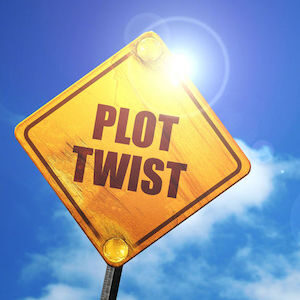By Dr. Ken Broda Bahm:

We know that movie viewers love a plot twist. A surprising turn of events can make a movie memorable, and in films like “The Usual Suspects,” or “The Sixth Sense,” your understanding and perspective on a story can suddenly shift faster than you can say, “Luke, I’m your father.” In a broadcast last month, the NPR social scientist Shankar Vedantam discussed some of the reasons why audiences like the element of surprise. Speaking with cognitive Scientist Vera Tobin, they observe that stories play on our tendency to want to make sense of the world, and plots become more involving and ultimately more satisfying when they engage us in greater effort by violating what we might expect.
This well-known feature of the narrative applies to your trial stories as well. In the courtroom setting during opening statement, for example, the purpose of your story is not to entertain, but at the same time, you still need to hold attention, to involve your audience, and to encourage them to adopt your frame of reference. So it helps to think of the narrative devices that do all of that in other contexts. Chief among them is the element of surprise. Rather than just laying out the sequence of events in linear fashion, consider adding a twist or two to the straight-line narrative in order to draw your audience in. In this post, I will share five ideas for adding plot twists to your trial story.
1. The ‘Little Did We Know’ Timeline
One great technique is to contrast what was going on from two different perspectives. For example, “Here are the events we knew about…” and then later adding in, “But here is what was actually going on outside of our awareness.” This can be especially useful in cases that involve some element of fraud or deception by the other party. When visualizing this on a timeline, it works well to put one set of events above the line (“What we knew”) before adding the other set of events below the line (“what we didn’t know”).
2. Begin at the Turning Point
Stories don’t always begin at the beginning, nor do they need to. Often in cinema, especially, the action will begin at the essential turning point in the drama, and only then will the narrator go back to the beginning in order to fill in how we got to that point. Doing this helps to highlight the key event or moment. Moving back and building again to that event also allows you to emphasize it twice. In a breach of contract story, for example, you might begin with the realization of the breach itself, and then move back in time in order to introduce the parties and the early steps of the relationship. That helps to cast those earlier moments in a more negative light, because we now know what is coming.
3. Pause Before the Finale
You have probably seen the moment in a thriller, or an action movie, where the tension has been building toward a particular moment — the bank robbery is starting, the betrayal is imminent, the Death Star is about to be attacked — and then suddenly the action will slow down and we pause to take a closer look at a particular character or particular situation. This “calm before the storm” device is useful, not just for building anticipation, but also, to encourage the audience to put a particular frame or color on what they are about to see. To get the most out of the story’s climactic scene, don’t rush to get there.
4. Add an Unexpected Character
In a narrative, a “character” is anything that can be a focus in the movement or development of the plot. Of course, the individuals and the organizations involved are characters, but in some cases, a concept can also play that role. For example, some conditions or ideas — the market, the element of risk, or currently the pandemic — could be personified in a way and treated like a character in the drama, as someone that the other main characters should have anticipated or reacted to. You can also put the jurors themselves into the story, implicitly at least: We’ve all been in a situation where something seems safe, but a voice inside us tells us we had better check twice. So that is what we do, and that’s what my client did.
5. Save a Surprise for Later
One great method for regaining and sharpening an audience’s attention is to create a moment when they learn, “Here’s something you haven’t heard yet….” Saving a piece of information for later — near the end of opening statement, or maybe even at a time during presentation of evidence — creates a psychological effect that is exploited by advertisers, when they jump in with a “But wait, there’s more!” before you consider buying. The introduction of a late appeal can be effective because it comes at a time when the listener is deciding whether to accept the message, and at that stage, thoughts about why they shouldn’t, can be overridden by adding one more reason to accept. And, more basically, if we hear about something mysterious or new, we want to know what it is.
These are a few devices, but the larger message is this: Think creatively. You aren’t just “laying out the facts,” you are engaging and motivating your fact-finders.
___
______
Other Posts on Narrative:
- Understand Narrative: Why People Watch Disaster Movies During a Disaster
- Develop Your Story Early
- Improve Your Storytelling: Seven Ways